7. Emulsions and microemulsions
Emulsion- A mixture of immiscible liquids (not insoluble, still some degree of solubility, however usually different phases).
Examples:
– Oil-in-water (e.g mayonnaise) (continuous oil phase)
– Water-in-oil (e.g. butter)
– Double emulsions (e.g. oil-in-water-in-oil) (emulsion drops in the emulsion, drops have to be quite large to have drops inside of them)
• Droplet size: <100 nm to 100 μm
• Surface layer of adsorbed emulsifier (surface active) (protein or polymer) stabilizes
– Surface layer is typically very thin (1-3 nm)
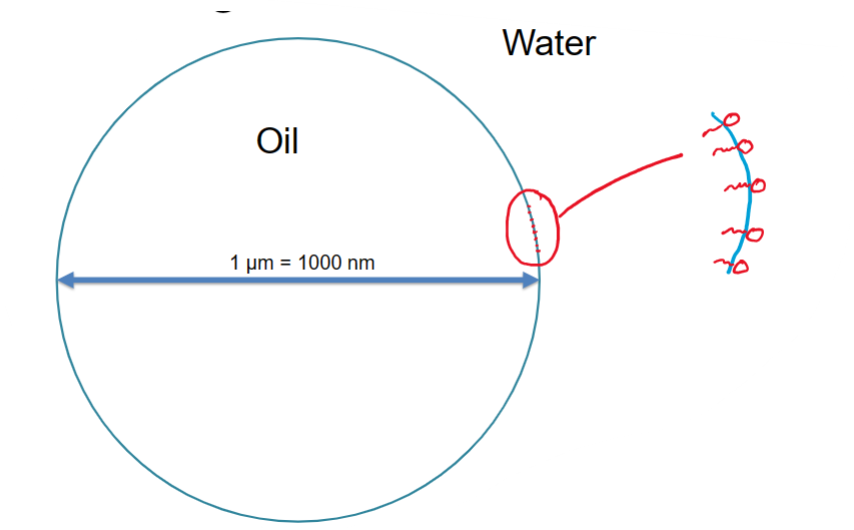
Emulsion instability
- Emulsions are thermodynamically unstable (eliminating the dispersed phase)
- A barrier needs to be created to prevent flocculation and coalescence
- Add an emulsifier to create a barrier, stabilise by giving repulsive forces between oil drops (the main function of emulsifier, not to decrease surface tension)

Emulsion instability
• Sedimentation/Creaming (Stokes law)
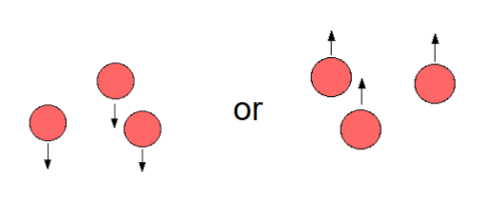
• Flocculation (aggregation)

• Coalescence- fusion of several small droplets to larger droplets

•Ostwald ripening
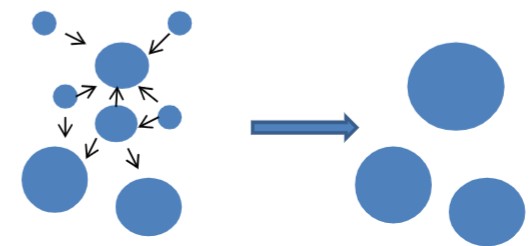
Emulsifier- The main role of the emulsifier is to prevent the immediate coalescence of droplets when the emulsion is formed, and to prevent flocculation and coalescence. The main role is not to lower surface tension that the liquids can mix.
In order to stabilize an emulsion the emulsifier should:
- Give rise to repulsive interaction between droplets
- Contribute to the interfacial viscosity (more rigid (higher viscosity) the interface better resistance to deformation)
- Should be well anchored at the interface
Coalescence
- Requires that droplets are in close contact either through:
- High dispersed phase volume fraction (φ) (e.g mayonnaise, the particles are not spherical, the maximum phase volume fraction is 0.57 for spherical particles)
- Flocculation
- Creaming/sedimentation
- Requires deformation of the interface
- Large droplets (larger flexible interface) are typically more susceptible to coalescence
Minimising the interface

Coalescence - Influenced by the adsorbed layer stability
• Thick layer → more stable
• Rheological properties (viscosity) of the adsorbed layer and the dispersed phase
• The presence of other phases
• Solid particles wetted by the disperse phase can destabilize (example: fat
crystals, can keep two oil droplets together called partial coalescence (e.g whipped cream and ice cream))
• The interfacial tension
• Low interfacial tension → work to deform interface lower → sensitive to
coalescence
Coalescence – Deformation of the interfacial layer
- Flow of continuous phase ”drags” the surfactants along the interface
- Counteracting flow tries to restore the interfacial tension
Needs to have flow of surfactant
Polymaric will not move as much
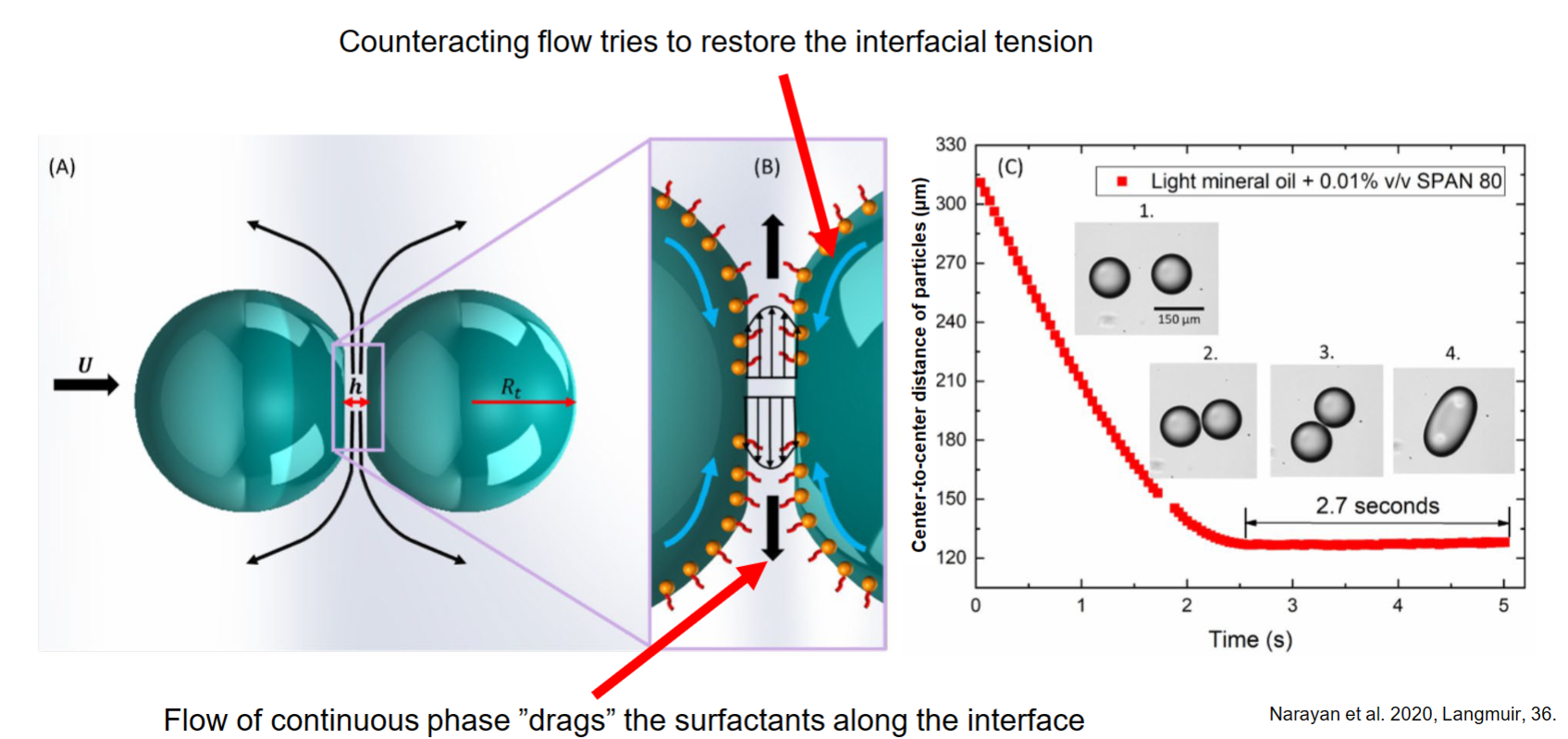
Coalescence – Transition state
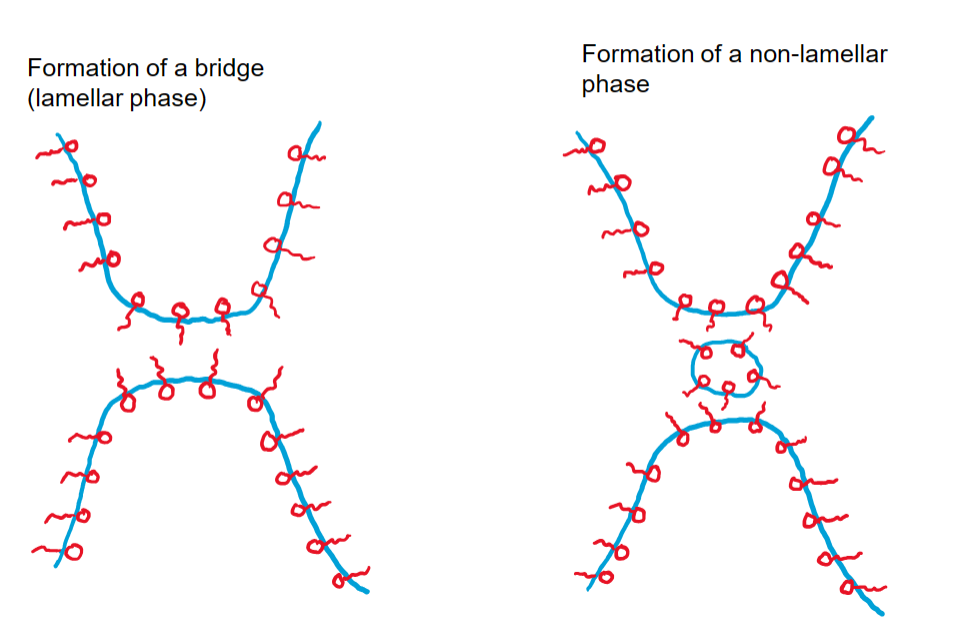
Different types of emulsifiers
- Low MW surfactants/lipids
- Marcomolecules (surface active polymers and proteins)
- Adhesive particles (partial wetting - pickering emulsions)

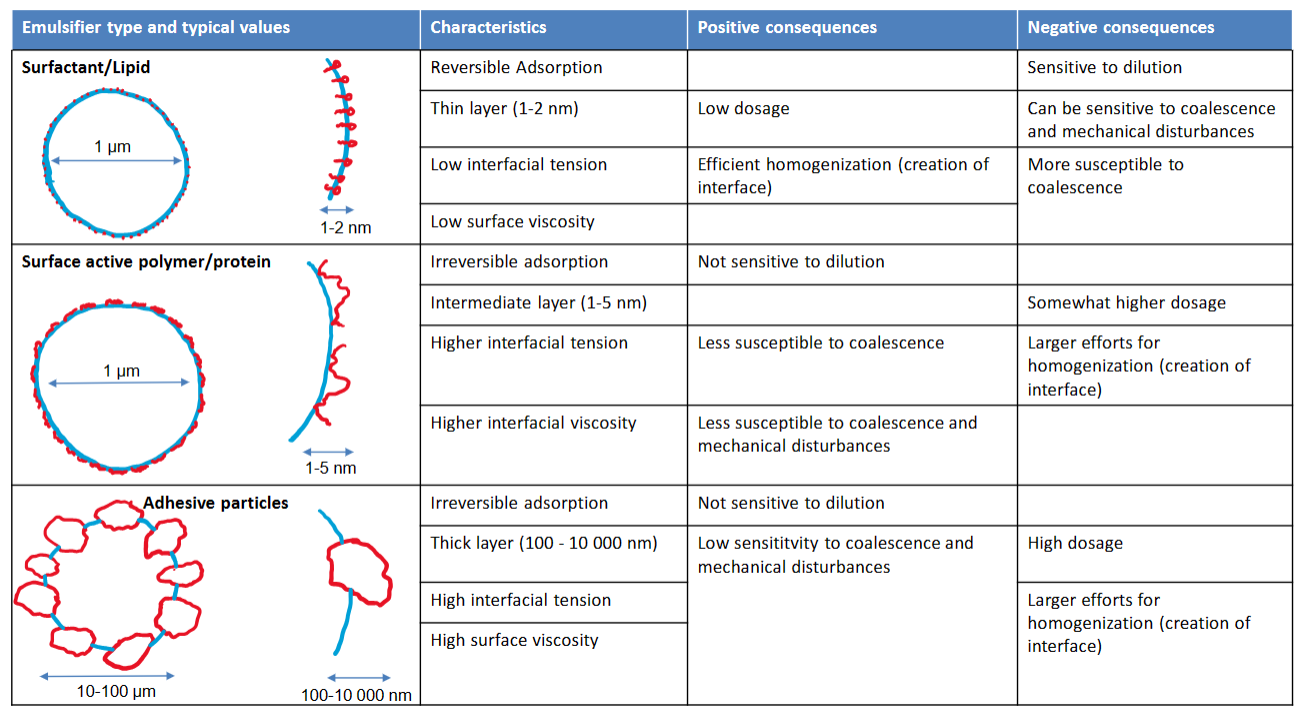
Most common are surfactants/lipids and surface active polymer/protein
The droplet has to be quite big to have adhesive particles on it. Packing effectiveness is lower than others. High dosage (larger masses) → more expensive
Estimation of emulsifier dosage
Can also apply for other dispersions than emulsions
- Rough estimation based on mass to cover interface
Length of surfactant molecule ~ 1 nm (i.e. thickness of adsorbed layer)
Density of surfactant molecules ~ 1000 kg/m3
10-9 * 1000 = 10-6 kg/m2 → 1 mg/m2
Calculate the total surface area in the emulsion/dispersion and compare with the mass of
emulsifier present
- Estimation from thickness of emulsifier layer
Gives emulsifier amount relative to the dispersed phase
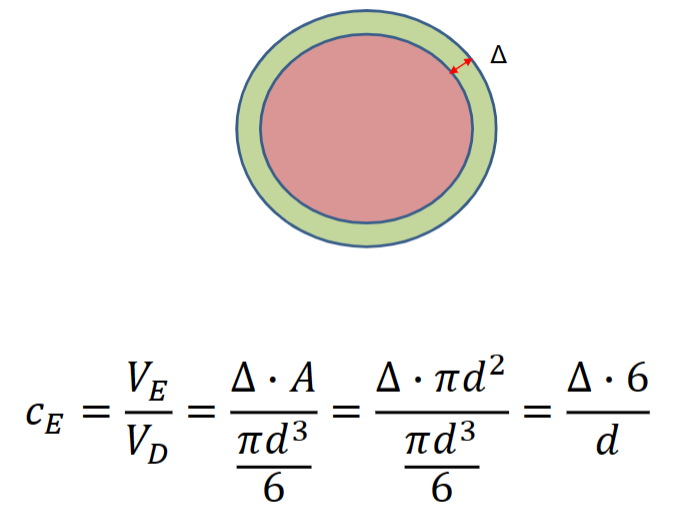
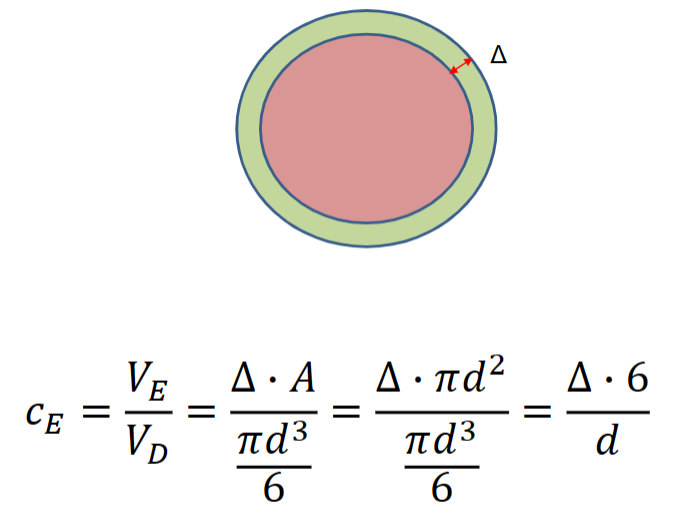
VE= Volume of emulsifier
VD= Volume of droplet
cE= Volume of emulsifier (in relation to the dispersed phase)
A= Area of droplet
d= diameter of droplet
Δ= thickness of emulsifier layer (length of emulsifier molecule)
Emulsification rules of thumb
Bancroft rule: The phase in which the emulsifier is most soluble in will be the continuous phase
Hydrophilic-Lipophilic Balance (HLB) concept:
- Emulsifier with a HLB value < 7 forms an oil continuous emulsion
- Emulsifier with HLB > 7 forms a water continuous emulsion
Examples of emulsification in relation to solubility (Bancroft rule)
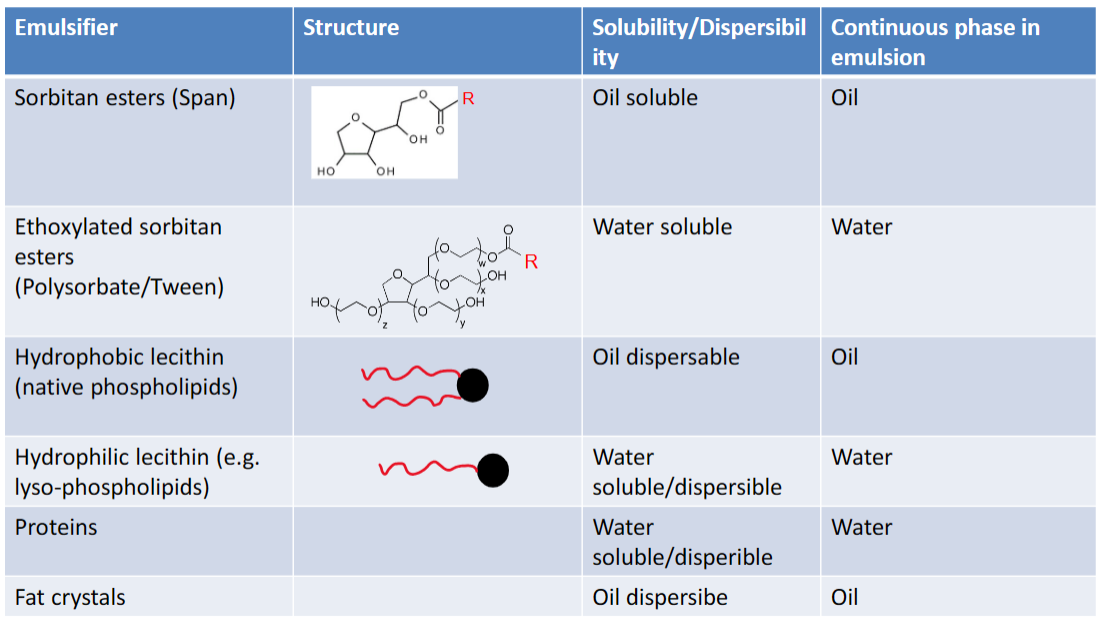
Ethoxylation makes it more water-soluble
Hydrophilic-Lipophilic Balance (HLB)
The balance between lipophilic and hydrophilic chemical groups in the emulsifier
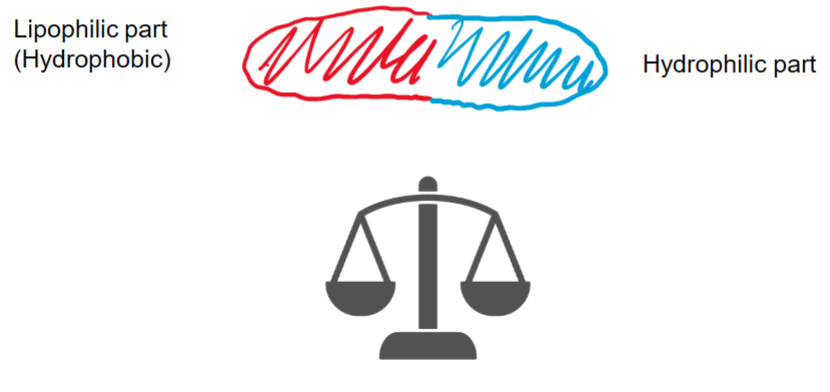
HLB = 7 + Σ(hydrophilic group contributions) - Σ(hydrophobic group contributions)

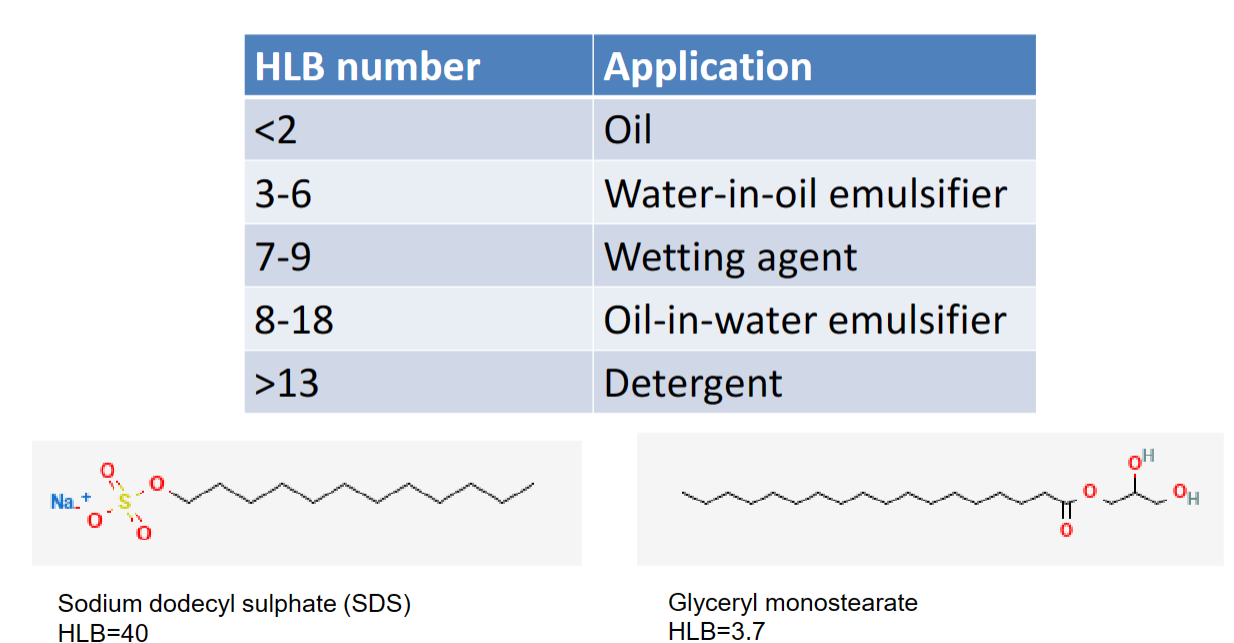
Examples of HLB
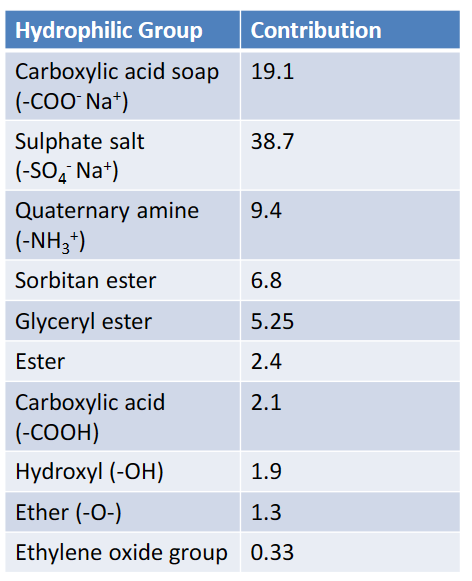
More values can be found in table 7.1 in Goodwin
Emulsification and stability
• For emulsification we need unstable interfaces
• For stability we need stable droplets
Effects of emulsifiers for emulsification and stability

Inter-droplet interaction: attraction and repulsion
What should the emulsfication process accomplish?
• Create new interface (more and smaller droplets)
• Energy cost: A*γ (surface area*surface tension)
• Overcome the viscous resistance of the disperse phase
• Dynamic viscosity η
• Create a deformating force gradient over the droplets (intensive treatment to get small particles)
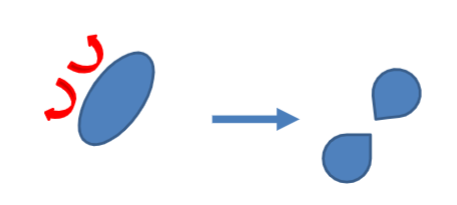
Emulsification
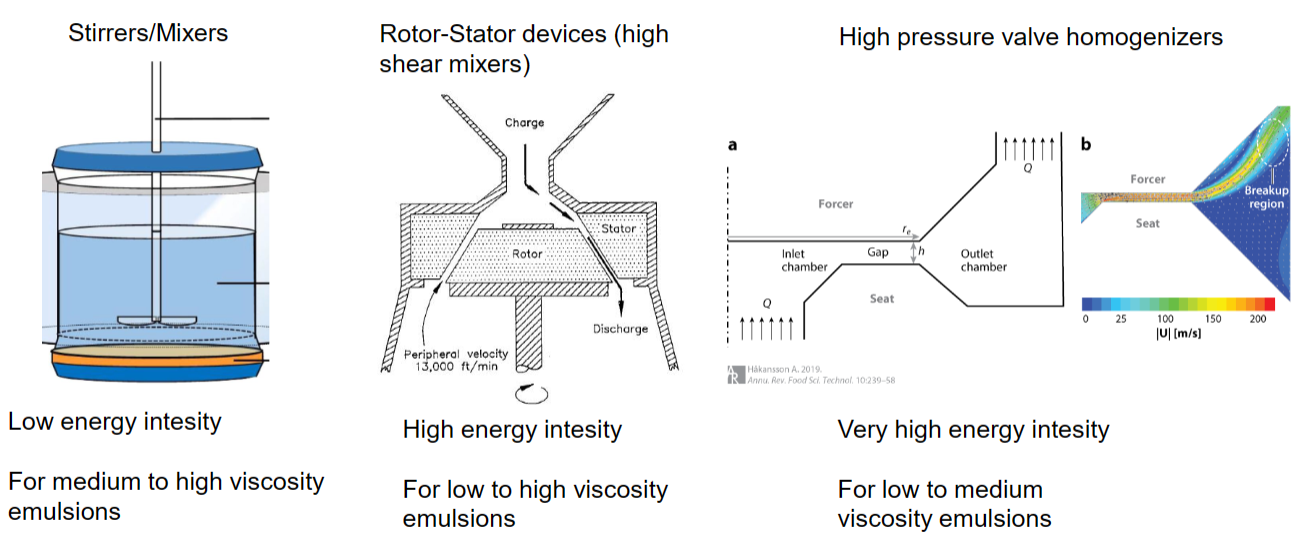
Phase inversion in emulsions- switch phase continuous phase becomes dispersed
• Spontaneous phase inversion
• Can occur at a high volume fraction (φ > 0.7) of dispersed phase
• Can also occur at a lower volume fraction
• For instance by increasing T in oil-in-water emulsion stabilized by an ethoxylated surfactant (sensitive to high temperature, hydrophilic drastically decreases → wants continuous phase rather polar)
• Phase inversion can also occur due to intense mechanical treatment
• Can be an approach to disperse very viscous oils
For example: Cream → butter

Phase inversion in emulsions
Sensitive to emulsifier composition and volume fraction (φ) of dispersed phase
- High HLB emulsifiers are hesitant to form water-in-oil emulsions
- Low HLB emulsifiers are hesitant to form oil-in-water emulsions
- Phase inversion is most likely when emulsifier has an intermediate HLB (get bicontinuous system, any of phases can become continuous)
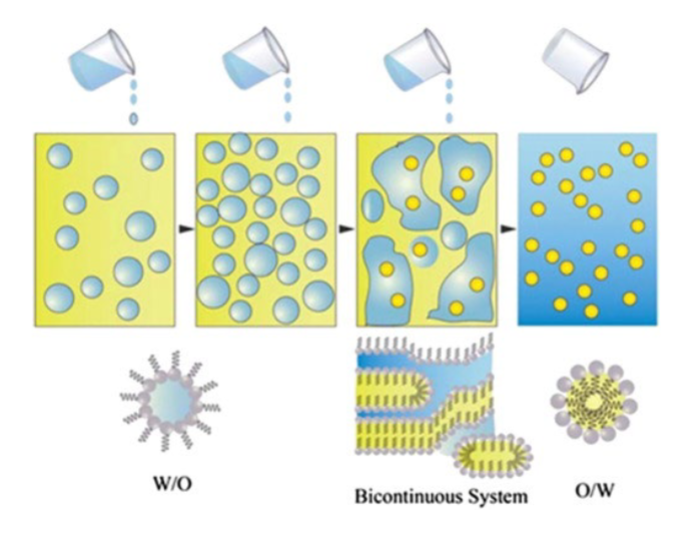
Self emulsification - ”Ouzo effect”
• Ouzo contains approx. 55% water (W), 45% ethanol (S) and 0.1% anethole (O)
• Upon dilution a meta-stable emulsion is spontaneously formed (it will not remain stable for to long)
Operating close to S-W line
By adding water to turbid solution
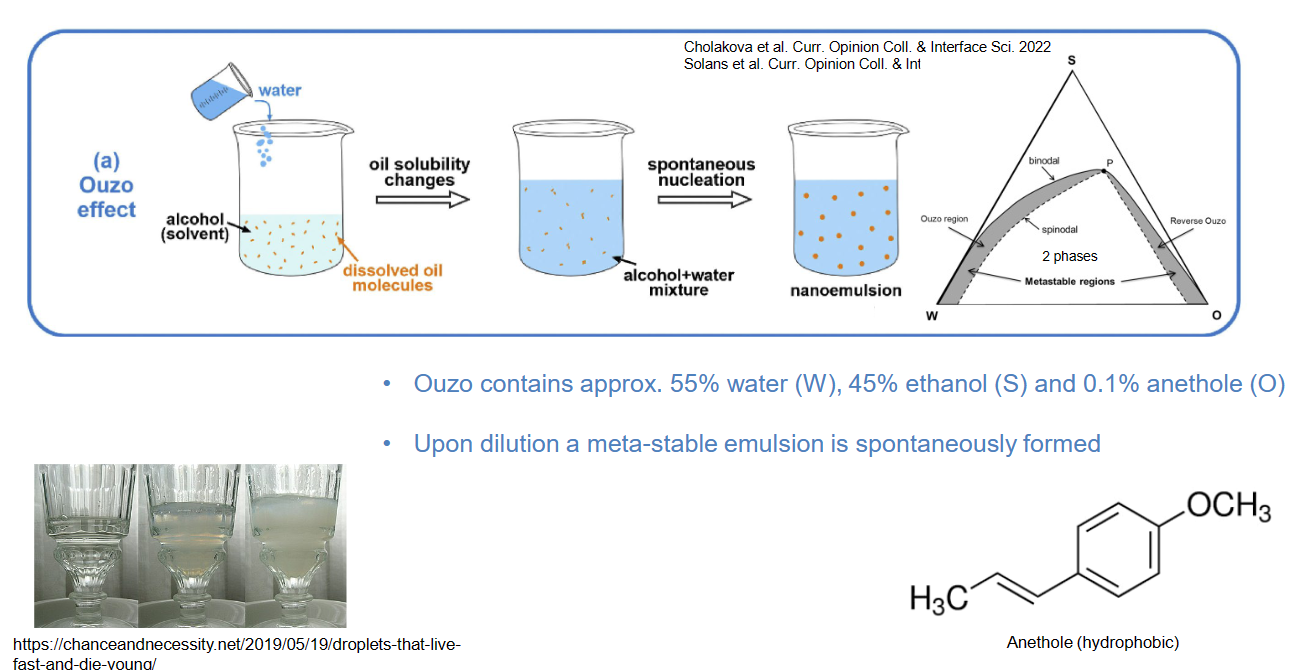
Self emulsification – Phase inversion composition (PIC)
Approach:
• Dissolve the emulsifier in the phase where it is least soluble
• Combine with the other phase
Surfactant is more soluble in the water??
Interface will burst → spontaneous droplet formation

Microemulsions
• Misleading terminology – ”droplets” are smaller than micro-scale
• Contains oil, water, surfactants and co-surfactants
• Co-surfactant can be a fatty alcohol (not surface active on its own)
• Gives additional lowering on the interfacial tension
(increases density → lower surface tension?)
• Requires relatively high amounts of surfactant
• Can be O/W, W/O or bicontinuous
• Are disordered
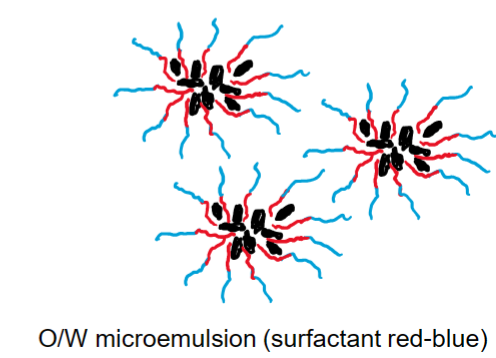
Microemulsions - properties
• Relatively low viscosity
• Solubilize both hydrophobic and hydrophilic molecules
• High diffusion of both oil and water soluble components (move quite freely)
• Low interfacial tension (close-packing of surfactant and co-surfactant)
Microemulsions – Winsor classification
Properties of microemulsions are changed by:
- Ionic strength (applied for ionic surfactants)
- Temperature (applied for non-ionic ethoxylated surfactants)
For Winsor III, the middle phase (M) can be a bi-continuous microemulsion
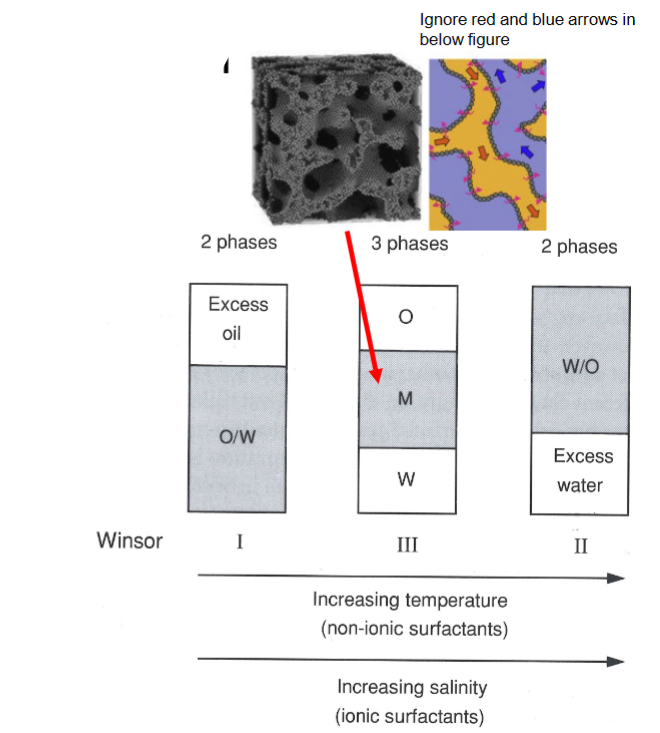
Microemulsions – Ternary phase diagrams (ionic surfactant)
• At point (o) 2 phases exist consisting of phase (m) and (n)
• At point (q) 3 phases exist: a (bi-continuous) microemulsion in equilibrium with water, oil and surfactant (A, B and C).
• Ignore point (p)
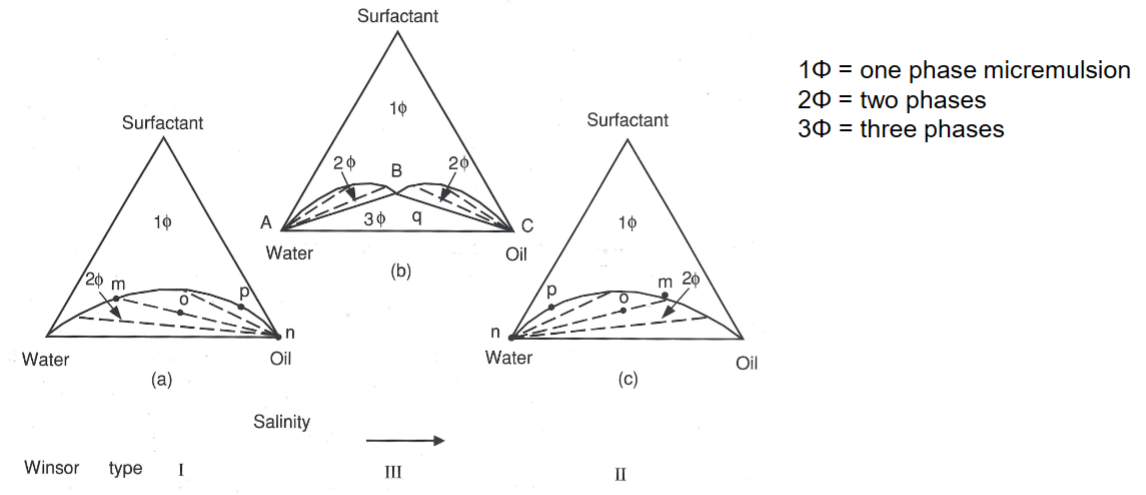
Liquid crystals vs. Microemulsions
Liquid crystal-
- crystalline order
Microemulsion-
- has no order
- domains are so small that they appear clear
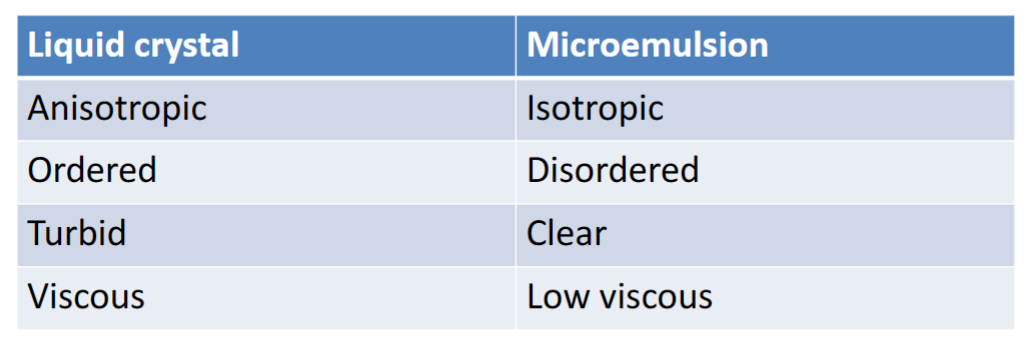
Macroemulsions vs. Microemulsions
Thermodynamically stable- there is an equilibrium
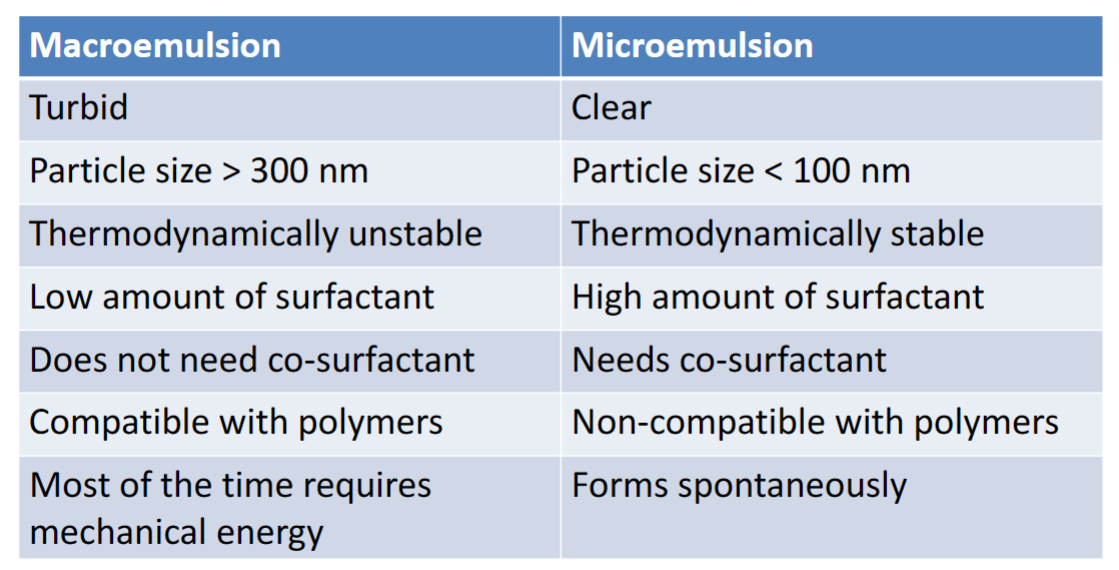
Microemulsion – Application example
Oil recovery
• In oil reservoirs the oil in trapped in porous rock (pore size approx. 50-1000 nm)
• Approx 10-25% brine and 55-80% crude oil
• Pressure is high and T= 70-100°C
• Primary recovery (spontaneous expulsion (splash out, because the pressure is high) and pumping): recovery = 15-20%
• Secondary recovery (flooding (pump) with water): recovery = addtional 15-25%
• Enhanced oil recovery using Winsor III microemulsion
• Very low surface tension
• Solubilizes both water and oil
• Recovery up to 90% of the remaining oil
From Winsor III emulsion with the specific oil and brine
- Good salt content (handle the high ionic strength (Ca2+) and not precipitate)
- Temperature (ethoxylated needs to be at specific temperature)
- Sufficiently chemically stable
- Uses a lot surfactant → not biodegradable → not good for environment